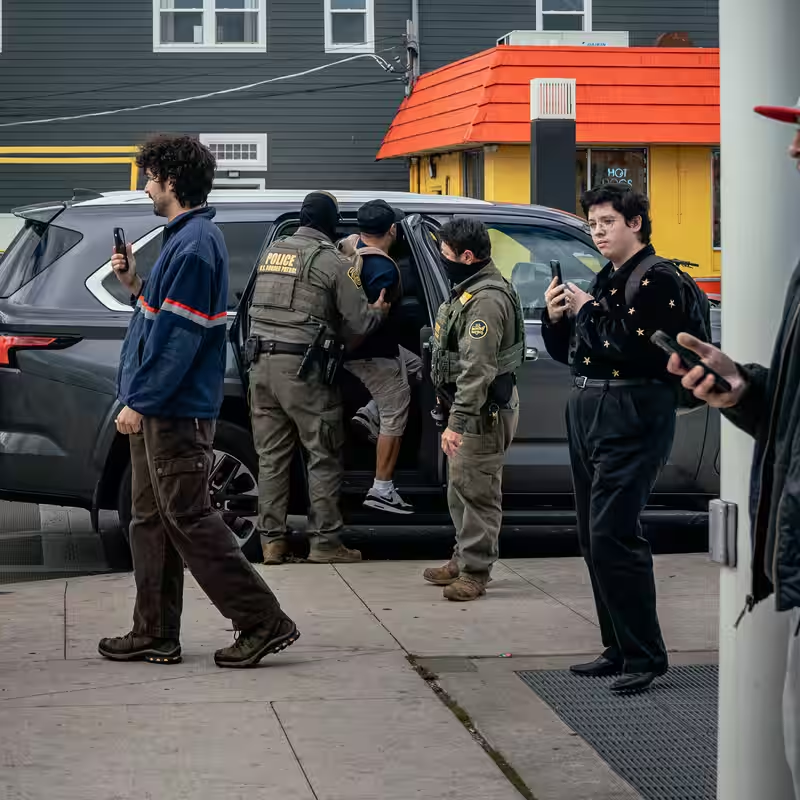Table of Contents
- The Legal Line ICE Is Testing
- Supreme Court’s Surprising Shift
- Real-World Impact on Latino Communities
- Ongoing Legal Battles
- Historical Context: Brignoni-Ponce Ruling
- Sources
Can ICE Stop You Based on Race Alone?
In cities from Chicago to Los Angeles, federal immigration agents have been stopping people who appear Latino—questioning them about citizenship without warrants or clear legal justification. For decades, such actions were legally off-limits. But under President Trump’s intensified deportation campaign, that boundary is being aggressively tested.
The core question now facing courts: Can ICE stop people solely based on race or ethnicity? The answer could reshape civil rights in America.
Supreme Court’s Surprising Shift
In a recent emergency ruling tied to a Los Angeles case, the U.S. Supreme Court allowed federal agents to consider race, ethnicity, accented English, or Spanish speech as factors—even potentially sole factors—when deciding whom to stop and question about immigration status.
This overturned a lower court’s temporary ban that had prohibited such stops. Justice Brett Kavanaugh wrote in a concurring opinion that blocking these tactics would “substantially hamper” immigration enforcement. Meanwhile, Justice Sonia Sotomayor dissented sharply: “We should not have to live in a country where the Government can seize anyone who looks Latino.”
Real-World Impact on Latino Communities
Reports from across the U.S. paint a troubling picture:
- In Washington, D.C., José Escobar Molina—a Salvadoran immigrant with legal status—was handcuffed outside his apartment without being asked for ID. ICE later apologized three times.
- In Chicago, dozens of arrests appear to violate a 2022 consent decree restricting warrantless detentions.
- In Mobile, Alabama, U.S. citizen Leonardo Garcia Venegas was detained twice this year despite being born in Florida.
Advocates say these aren’t isolated incidents but part of a coordinated strategy targeting Latino neighborhoods, bus stops, farms, and construction sites.
Ongoing Legal Battles
Four major class-action lawsuits are now challenging ICE’s tactics:
| City | Plaintiff | Key Allegation |
|---|---|---|
| Los Angeles | Pedro Vasquez Perdomo | Stopped at bus stop based on appearance; no reasonable suspicion |
| Chicago | Unnamed plaintiffs | Violations of 2022 consent decree; warrantless arrests |
| Washington, D.C. | José Escobar Molina | Detained without cause despite legal status |
| Mobile, AL | Leonardo Garcia Venegas | U.S. citizen wrongfully detained twice |
Historical Context: The Brignoni-Ponce Precedent
The legal foundation dates back to 1975, when the Supreme Court ruled in United States v. Brignoni-Ponce that “Mexican appearance” could be one factor—but not the only one—in border patrol stops. Felix Brignoni-Ponce, a Puerto Rican U.S. citizen and Marine veteran, was stopped solely because agents thought his passengers “looked Mexican.”
While the Court threw out his conviction, experts like UC Davis law professor Kevin R. Johnson argue the ruling opened the door to systemic racial profiling: “Since race can be one factor… it can become the dominant factor.”
Now, 50 years later, that fragile balance is collapsing.
Sources
The New York Times: Can ICE Stop People Solely Based on Their Race?




